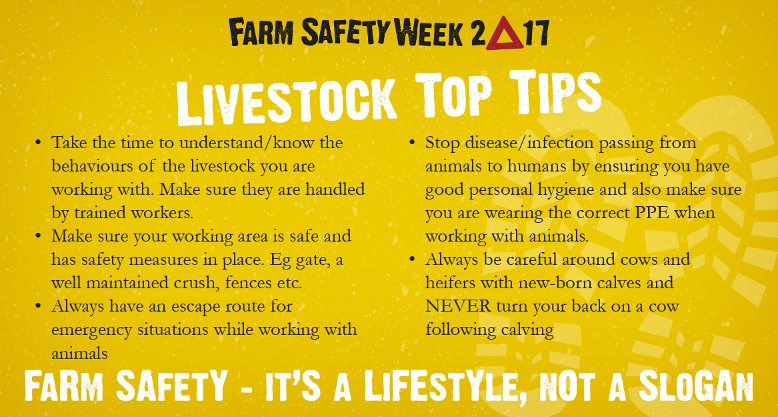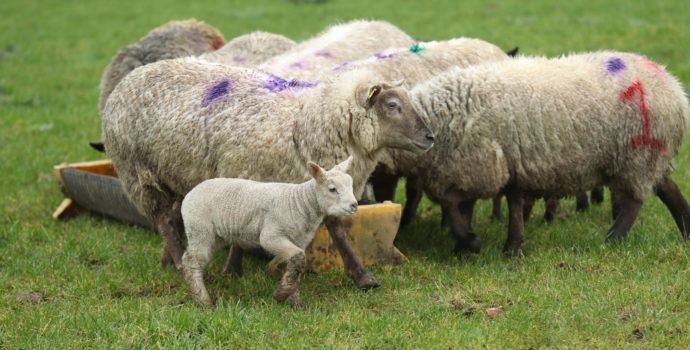Stay Safe with Livestock – Farm Safety Week Day 4

Today, the Farm Safety Week team is challenging farmers to think about improving livestock handling systems to make them safer and more efficient.
Many farmers never stop to consider why animals behave as they do and, more importantly, what this behaviour could mean to their personal safety. Animal-handling practices are often learned from watching others and from personal experiences growing up on the farm. Too often, this results in unsafe livestock handling and restraint practices.
Thankfully, most animal incidents are not fatal but too many men, women and children are needlessly injured every year due to a lack of safety awareness. Broken bones, crushed and mashed limbs, work absences and unnecessary medical expenses are some of the results of livestock-related incidents. So, today, the Farm Safety Week UK & Ireland team is challenging farmers to think about improving livestock handling systems and making them safer and more efficient.
According to Joe Healy, IFA President, “Over the past decade, on average one person is killed every nine days as a direct result of agricultural work activity and, since the start of the year, four people lost their lives as a result of livestock-related incidents.
“Handling cattle always involves risks, the risk of being hurt physically by an animal that is frightened or has been startled and the risk of being hurt due to the misuse of equipment or equipment that is poorly maintained. Over the course of this week, we have worked with our partners to educate and inspire a drive to improve agriculture’s poor safety record. Today it’s all about animals. Livestock can be unpredictable, something that even the most experienced farmer can’t completely plan for.”
“Farming is a highly rewarding industry and so vital to the Irish economy but it is still one of the riskiest.” adds Stephanie Berkeley from the Farm Safety Foundation, the charity behind Farm Safety Week UK & Ireland.
“Working safety with livestock involves much more than being ‘careful’ around recently calved cows or cantankerous bulls. In fact, many of livestock accidents are not directly related to the animals themselves but caused by improper use of equipment of poorly maintained or poorly built facilities. Often farmers don’t make adjustments or modify equipment to make it safer because they are in a hurry or because they think they can just ‘make do’ for economic reasons but farm safety is a lifestyle, not a slogan and ‘Because I’m in a hurry’ is not a good enough reason for poor maintenance of equipment and facilities. Safe equipment is more of an investment than an expensive luxury.”




